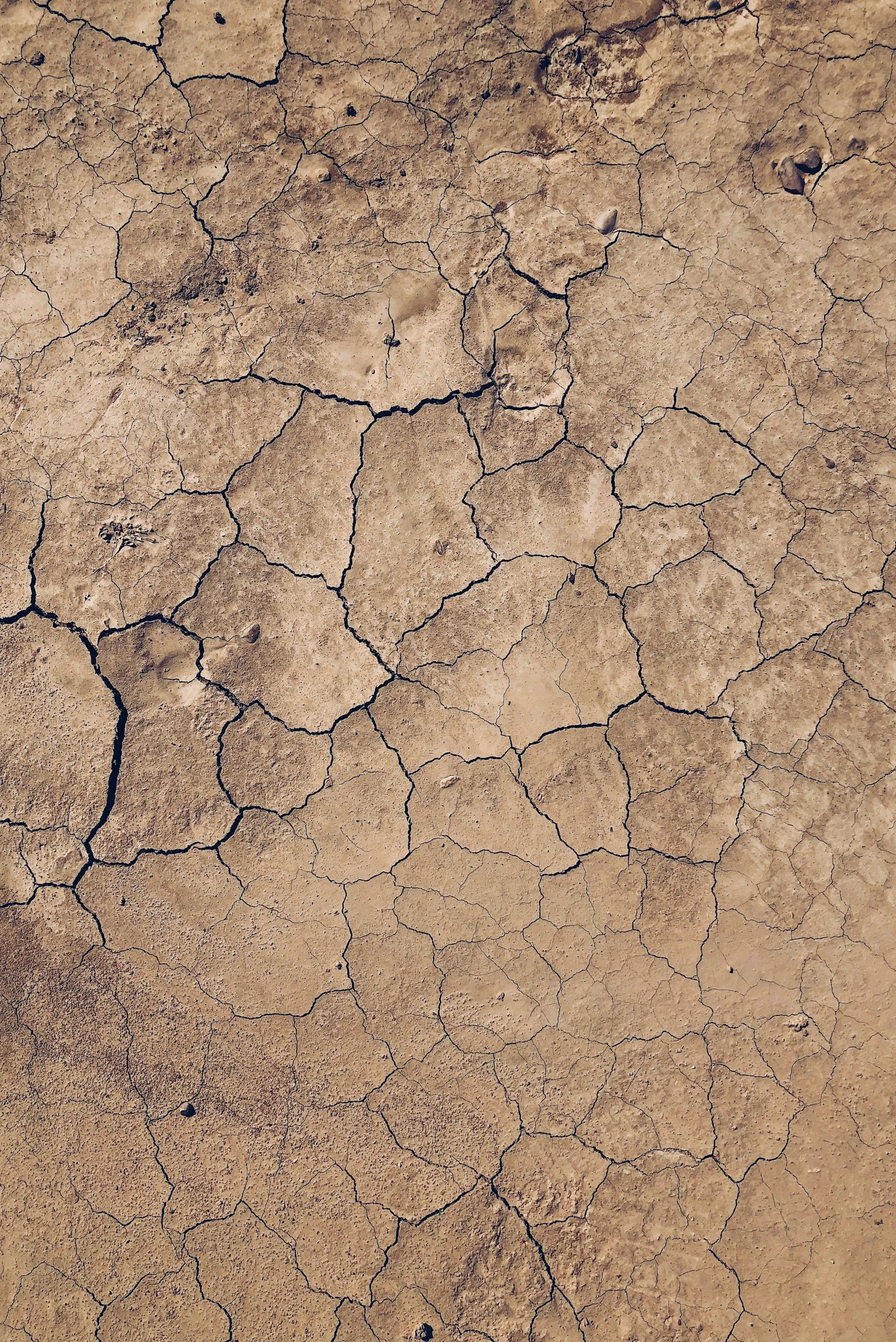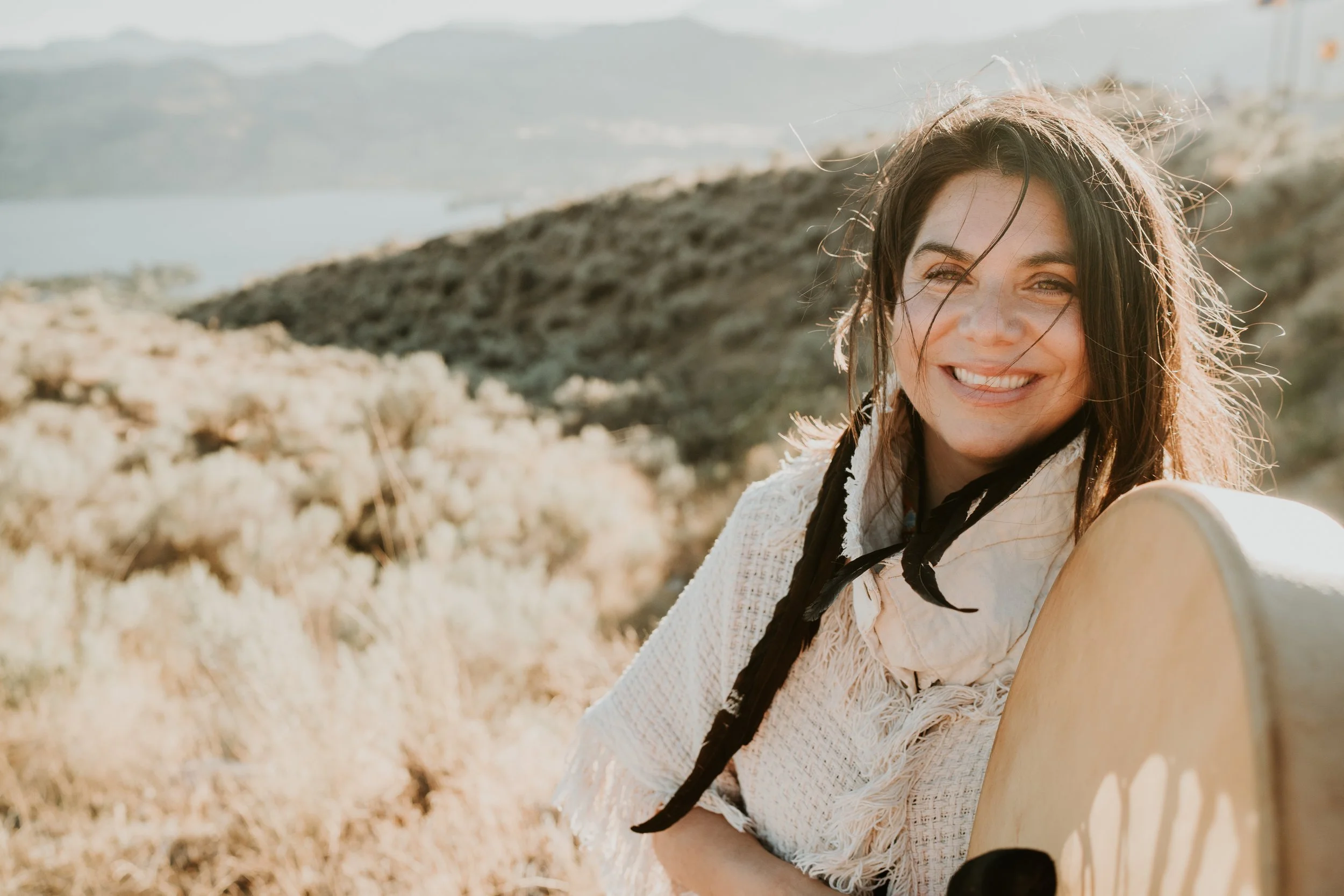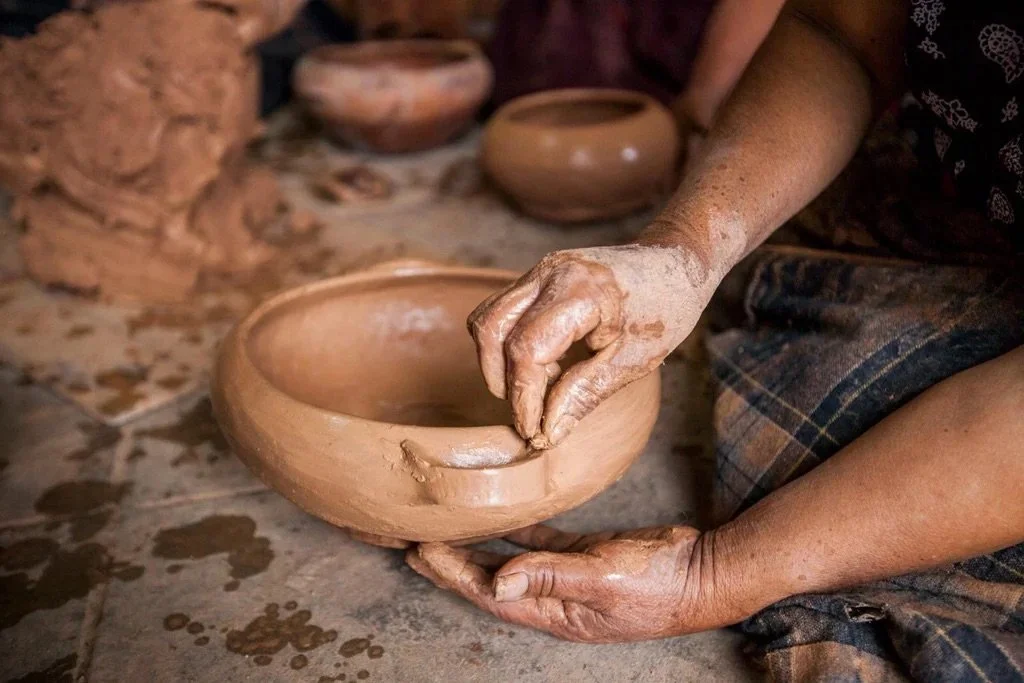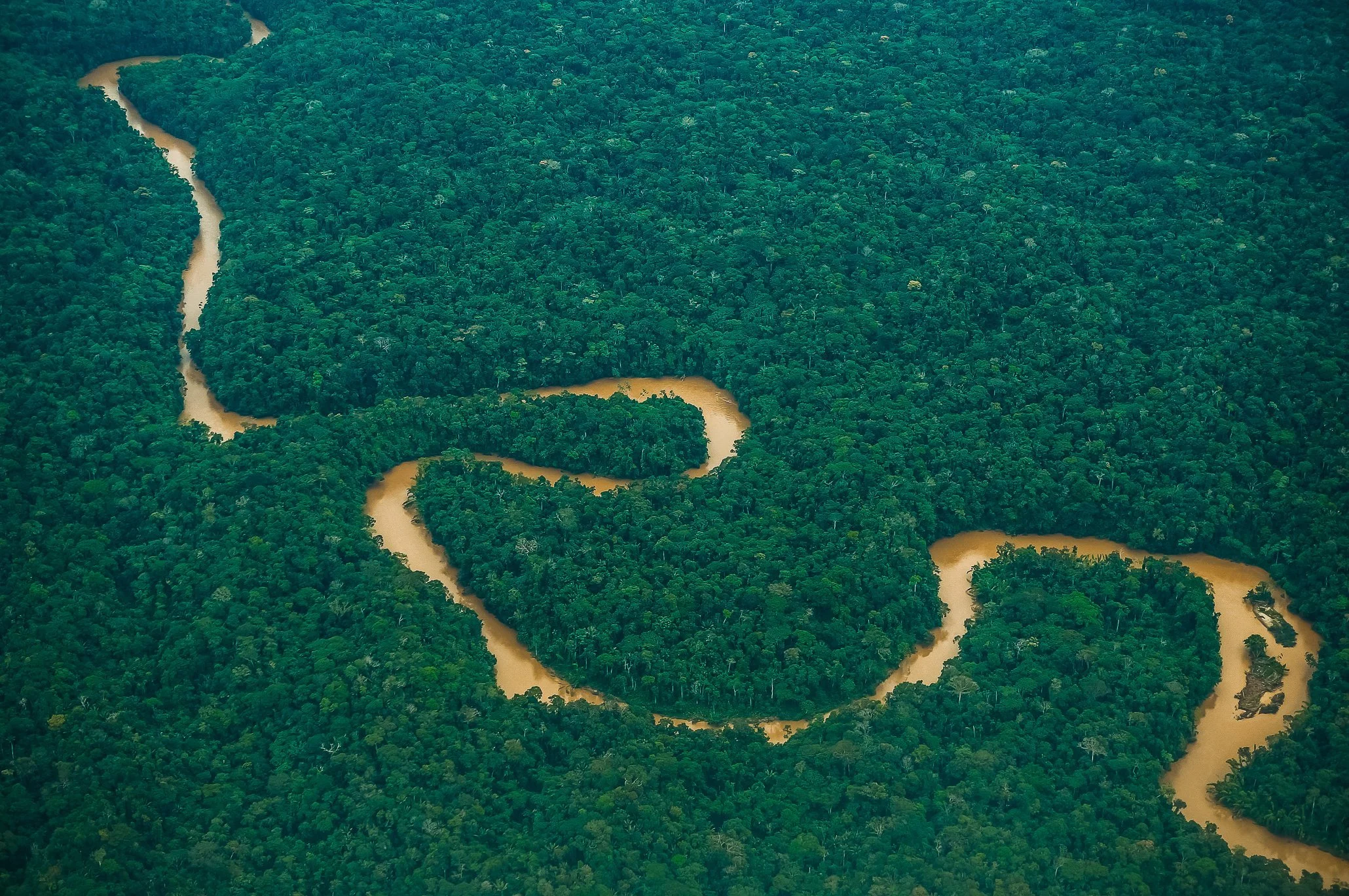
Artesanía Viva
Clay, Ceremony, and the Art of Return
A 6-Day Ancestral Pottery Retreat in the Amazon — Sapara Territory, Ecuador
March 2026
invitation
This is a gathering for those who feel the quiet call of the forest and the steadiness of their own hands. In the Amazon, within Sapara territory, we will listen to the earth, shape with clay, and remember that making is medicine. Artesanía Viva is a ceremonial retreat where pottery becomes a way of tending the sacred—slow, simple, rooted.
This retreat is the way pottery was always meant to be—alive, ceremonial, rooted. In the Amazon the clay speaks differently. It carries memory. It carries spirit. Working with it there awakened something ancient in me, something that pulled me back to the roots.
This is what Artesanía Viva invites: to touch clay as our ancestors did, to let our hands remember, to feel each vessel as an offering and each fire as initiation. Pottery not as product, but as prayer. Not as craft, but as medicine.

Clay as memory, hands as translators of the earth. Pottery not just as craft but as ceremony—each vessel an offering, each fire an initiation.
Flow: 6-Day Journey
Day 1 – Arrival & Cleansing
Arrival in Sapara territory. Tobacco blessing and herbal body-cleansing ritual prepare us for the days ahead. Opening circle with Pacha and Adrianna to set intentions. Evening rest in the rhythm of the forest.
Day 2 – Gathering the Clay
Guided by Sapara women, we go to the earth to gather clay in the traditional way. Learn the prayers and offerings made before collecting. Begin preparing the clay — softening, sifting, and blessing the material. Evening circle with story and song.
Day 3 – Shaping with the Ancestors
Hands in clay. Adrianna teaches ancestral hand-building: coiling, smoothing, shaping vessels without wheels. Learn the Sapara practice of burnishing with stones and leaves, creating a polished surface that connects breath and touch. Midday movement practice to embody the earth element.
Day 4 – Natural Pigments & Tool Making
With Pacha’s guidance, collect plants, stones, and minerals to prepare natural pigments. Learn to make ancestral tools — burnishing stones, smoothing leaves, carving sticks — and decorate vessels with carved patterns and painted designs. Evening cacao circle with stories of clay as memory.
Day 5 – Fire as Ceremony
The vessels meet the fire. Guided by Sapara women, we enter the ritual of firing — tending coals, offering prayers, watching transformation. Fire as initiation, fire as teacher.
Day 6 – Return & Remembrance
Closing circle. Each woman shares the story of her vessels — what they carry and what they have taught. Some pieces travel home with you, others are offered back to the land. Farewell meal and departures.
what you’ll experience
Daily pottery practice held as ceremony — gathering clay, shaping by hand, burnishing, carving, pigment preparation, and firing.
Direct teachings from Sapara women, who carry the ancestral memory of pottery.
Natural pigment making using earth and plants gathered in ceremony.
Tool making with ancestral methods — from polished stones to carved sticks.
Movement and storytelling woven into each day to ground and integrate.
Creation of 5–8 hand-built clay pieces, fired in ceremony — some to bring home, some to offer back to the land.
Circles of song, story, and prayer with the Sapara women.
Living immersion in Sapara territory, where land, body, and craft return to memory.
Learning ancestral shaping techniques from Sapara women — burnishing, carving, natural pigment mixing, tools built by hand
*Programming with Naku is coordinated in alignment with community schedules and priorities. Specific facilitators and sessions may evolve; the heart of the work—reciprocity and respect—remains constant.

location
Naku — Sapara Territory, Pastaza Province, Ecuador
We are hosted with gratitude by the community. Expect river paths, canopy song, and star-filled nights. Lodging is simple and comfortable within the Naku eco-lodges. Meals are nourishing and locally prepared.
Who this is for
For artists, seekers, makers, and memory-keepers. For those who crave a slower rhythm and a deeper way of creating. For anyone who senses that art is a path home and wants to honor the earth through their hands.
guides + hosts
This retreat is guided not only by us, but also by the women of the Sapara Nation, who carry the living memory of pottery as a ceremony. Their hands, their stories, and their presence root us in the ancestral way — where clay is not a craft, but a conversation with the earth.
-

Daniela Miranda | Antüpewma Rülkelme Mella
Photographer | Ceremonialist | Storyteller
Daniela is a ceremonialist, photographer, and storyteller. Her work bridges ancestral wisdom with future vision, channeling photography as ceremony — a way of seeing not just what is, but what is coming. She weaves together ritual, movement, and image to hold spaces of remembering and return.
-

Florencia Fridman
Cacao Ceremonialist | Educator
Florencia is a cacao educator and ceremonialist. Her work is rooted in Mayan tradition, creating spaces of heart-opening through cacao, prayer, and sound. She brings the medicine of cacao to this retreat as a thread of connection between body, spirit, and the earth.
Dates + Details
Dates: March 2026
Duration: 6 days / 5 nights
Group size: Boutique experience, no more than 9 participants
Investment:
4,200 (payment plans available)
What’s included:
All transfers from Quito to Puyo and into Sapara territory
Daily ceremonies with tobacco, cacao, and herbal body-cleansing rituals
Teachings from Sapara women on ancestral pottery: gathering clay, hand-building, burnishing, pigment preparation, carving, and fire as ceremony
Materials for pottery, pigments, and tool making
Gear for the forest, including boots
Guidance from Pacha (wisdom keeper) and Adrianna (potter) throughout
Movement practices to embody the earth element and integration circles
Storytelling and song to deepen connection with Sapara culture
5–8 clay pieces you’ve created — fired in ceremony, some taken home, others returned to the land
Documentation and photography of the process (with consent)
Contribution to Sapara-led initiatives through the Naku Foundation, ensuring reciprocity
Not Included
International flights to and from Quito, Ecuador
Personal travel insurance (required)
Personal purchases (souvenirs, extra snacks, items outside the retreat flow)
Any additional plant medicine ceremonies beyond what is offered in the program
*Exact ground transfers depend on river/road conditions and will be confirmed closer to the retreat

Ethics & reciprocity
Artesanía Viva operates in alignment with Naku’s community guidelines. A portion of the proceeds supports Naku Foundation which is a Sapara-led initiative in culture, language, and forest protection. We follow consent-based photography; presence comes first. Participants are asked to arrive with humility, to listen more than they speak, and to honor community boundaries.
Photography note: While we will document aspects of the making process and landscape, this is not a content trip. Any imagery created will be shared first with the community for consent before public use.
Why This Matters
For the Sapara people, pottery is not craft — it is survival, memory, and prayer. Each vessel carries story, each fire keeps the lineage alive. With fewer than 700 Sapara people remaining, and only a handful of women still practicing this ancestral art, every gathering is an act of cultural preservation.
By sitting at the fire with Pacha and Adrianna and some of the other women in the community, you are not only learning how to shape clay — you are helping to protect a living tradition that has been carried through centuries. Your hands become part of this lineage, ensuring these teachings continue.
This retreat also directly supports the Sapara Nation through the Naku Foundation, funding education, cultural preservation, and community well-being. What you carry home is not just pottery — it is memory, connection, and responsibility to the earth.
FAQ
These traditions are passed down through Sapara women; you are not learning pottery in abstraction, but under the guidance of women who carry the memory and techniques of generations.
-
Yes. You don’t need pottery experience—only a willingness to learn and to move slowly.
-
Yes. Participants will create and take home 5–8 finished pieces, depending on the rhythm of the clay, firing conditions, and their own pace. Some additional pieces may be offered back to the land in ceremony.
-
Please reach out. We’ll share terrain details and explore if this is the right fit.
-
A cacao ceremony is a type of shamanic healing, rooted in helping rebalance the energies within us, open our hearts, and restore good health. The cacao plant is seen as a medicinal plant and has been used for a number of spiritual, medicinal, and ceremonial purposes throughout history.
It's for those who want to heal your mind, body, and spirit.
Contact us.
dani@danimiranda.co


